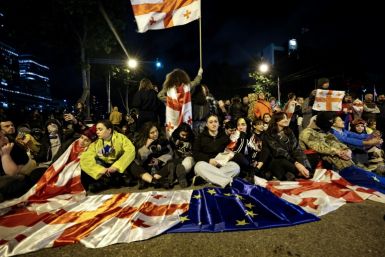Australian Stock Market Report – Afternoon 11/6/2012
MARKET CLOSE
(4.30pm AEDT)
The Australian sharemarket rose for the third straight session and for the sixth time in seven days. The All Ordinaries Index (XAO) edged higher by just 0.2 per cent or 10.1 pts to 4503.7. Despite the improvement, investors weren't overly interested in equities with the Melbourne Cup demanding much of the attention. There were only $2.7 billion worth of shares traded today; around 25 per cent less than yesterday.
Last night, U.S markets improved while European shares finished in the red ahead of the U.S Presidential Elections. The Dow Jones Industrials Index (one of the most popular ways to measure U.S market performance) rose by 0.2 per cent, while the French and Italian markets slid by almost 1.5 per cent.
All sectors with the exception of the defensive telcos improved today, with the banks contributing most to the gains. National Australia Bank (NAB) has underperformed its peers this year, however rose by 0.85 per cent or 21 cents to $25.05 today. Since the start of 2012, NAB is up just 7 per cent which is less than half the gains of the other majors.
As a group, the miners ended largely flat, with the S&P/ASX 200 Materials Index rising by just 0.03 per cent or 2.7 pts to 10243.4. Australia's second largest miner, Rio Tinto (RIO) jumped 1.05 per cent or 62 cents to $59.50. BHP Billiton (BHP) eased 0.03 per cent or 1 cent to $34.81.
On the economic front today, the Reserve Bank of Australia (RBA) decided to keep interest rates on hold despite the market factoring in around a 55 per cent chance of a rate cut by close of business yesterday. The RBA seemed happy to return to wait and see mode for another month due to signs of modest improvements in the global growth outlook and slightly higher inflation.
This makes it only the fourth time in 24 rate moves over the past five years that the RBA has moved on rates in isolation for one month only without backing up with another move in the same direction the very next month.
Immediately following the announcement, the Australian Dollar (AUD) shot up from US103.6 cents to around US104.2 cents within 30 minutes. The XAO remained largely unchanged despite significant volatility at around 2.30pm (AEDT).
CommSec's Chief Economist, Craig James said that "The $64 question is where we go from here. Interest rates are already low, but could still go lower. But rate cuts alone may be insufficient to provide the stimulus necessary to keep economy growing at a trend pace and prevent the unemployment rate from rising. Confidence and expectations will be all-important on whether further rate cuts are required. It raises the contentious issue of whether the Reserve Bank needs to give borrowers some assurance on rates. If borrowers believe that rates will stay low for just a short time before moving higher again, then they will be reluctant to increase borrowing or spending levels. In New Zealand the Reserve Bank provides views on the direction of 90 day interest rates. And in the US, the Federal Reserve has committed to keep rates low until mid-2015. While the same length of commitment is clearly not required in Australia, the issue is whether some guidance on rates is useful or even necessary."
The Australian Bureau of Statistics (ABS) issued the latest tourist arrivals and departures numbers and showed that despite the strength of the Australian Dollar (AUD), tourists are flocking to Australia. A record 622,000 Chinese tourists visited Australia over the past 12 months.
CommSec Economist Savanth Sebastian said that "Certainly airlines, retailers, transport operators and travel companies' love the fact that not only are Aussies jetting abroad but tourists continue to travel down under at the same time. Tourist arrivals hit record highs in the year to September with over 6 million tourists holidaying in Australia. The good news for tourist operators is that people continue to track down under despite the strength of the currency. The strength in tourist numbers is more a function of rising wealth levels across Asia."
In Europe tonight, reports on German factory orders, industrial and manufacturing production will be issued while a 10-year bond auction will be held in the U.K.
In the U.S tonight, much of the market's attention will be on the Presidential election. A close result is expected and investors will probably take the rest of the week to digest the result and what this means for the global economy. On average the US Dollar (USD) has risen in the weeks following the Presidential elections.
Volume of shares traded came in at 1.13 billion today, worth just $2.75 billion. 421 shares were up, 408 were weaker and 372 ended unchanged.
At 4.30pm (AEDT) on the Sydney Futures Exchange, the ASX24 futures contract is down 0.25 per cent or 11 pts to 4462.
Due to the end of daylight savings in Europe, most major European markets are now trading between 7pm (AEDT) and 3.30am (AEDT). Futures are currently pointing to a weaker start to trade tonight.
U.S futures are pointing to a slightly better start tonight. Due to the start of daylight savings in Australia and its end in the U.S, American markets will now be trading between 1.30am (AEDT) and 8am (AEDT).
Turning to currencies, the Australian dollar (AUD) rose strongly following the RBA's decision to stay put on interest rates. One AUD buys US104.2 cents, is trading at £65.2 pence and €81.5 cents.
Australia is a commodity based economy, with commodities in general accounting for almost 80 pct of all our exports over the past nine months. In essence, when the going gets tough globally, there is fear of less demand for our commodities, which tends to result in a weaker AUD.
[Kick off your trading day with our newsletter]
More from IBT Markets:
Follow us on Facebook
Follow us on Twitter
Subscribe to get this delivered to your inbox daily






